- Home
- David McCullough
The Great Bridge Page 17
The Great Bridge Read online
Page 17
Martin was to concentrate on supplies and the hiring of the work force, Kingsley’s chief interests. He was, for all practical purposes, to be the executive officer for the bridge. For help he had Probasco and young McNulty.
The average age of the engineering staff, Roebling included, was about thirty-one. Paine, who was forty-one, was the senior member.
The men were all new to the job and to one another. The job itself, they all recognized, was going to be unlike anything attempted before. A little later, a salty and resourceful character named E. F. Farrington, who had worked on the Cincinnati Bridge, would be named master mechanic. But for now the only one who had had any previous experience building a Roebling bridge—or a suspension bridge of any kind—was the Chief Engineer and not even he had had working experience with some of the problems presented by this particular bridge.
Still he would be the one with the final say. And however much staff help he got, every important decision would be his in the end, and at this stage there was seldom any sure way to know which decisions, of all that had to be made, might turn out to be the important ones in the long run. Roebling, too, would be the one to deal with the Board of Directors and the all-powerful Executive Committee, with public officials from both cities, with old Horatio Allen, the high-paid consultant who had never built a suspension bridge, who knew little about the subject, but who had a reputation to throw about if he chose to.
Roebling would be the one to answer the sort of criticism from other overnight experts that the newspapers and a few of the professional journals liked to give space to. His father had been dead only a short time when a crackpot named Samuel Barnes B. Nolan was crying out in the pages of Scientific American that the grade of the bridge was too steep for wagons in slippery weather, that the central span was going to sag, that the whole work would be a “dead failure.” The claims were absurd, Roebling knew, but one such article could mean hours lost explaining why to some influential politician or overly conscientious board member.
To get what he wanted, and particularly if it was a departure from the original plan—or seemed to be—he would have to present his recommendations formally, in writing. As the work progressed, he would have to account for each and every step along the way, explaining his every decision in lengthy reports addressed to the Executive Committee. These would have to be quite explicate, thorough, candid, yet in language his nontechnical peers could understand. Every report would also become a public document, he knew, and so, come what may, each would also have to be convincing enough to maintain public confidence not only in the work itself but in the man in charge of it. If things went wrong, if materials proved shoddy, if equipment broke down, if the work fell behind schedule, if some part of the structure itself failed, if accounts were juggled or costs got out of hand, if there were mistakes in judgment by any of his subordinates, if there were accidents, he would be the one held accountable. In time, there would be nearly a thousand men under his command.
Most important of all, the plans he had to work with at this point were only of the most general sort, “the details not having been considered” by his father.
It was a responsibility of monumental proportions and there were older men in the profession, men with proved abilities, who might not have felt up to it. But there is nothing to indicate that Washington Roebling had even a moment’s hesitation. He had never had the full charge of a bridge before, the absolute final say, that is, except for two military bridges.
As yet he had done nothing to earn the confidence of his subordinates or any of the private parties connected with the enterprise. He was where he was strictly on his father’s say-so and because the men who wanted the bridge built had been left with no other choice. Moreover, as he doubtless sensed from the start, anything he did would be measured against what his father might have done. He would be forever compared to the old man and held accountable for things said or promised by him. And however well he might succeed, however much of himself he might put into the work, the odds were it would always be John A. Roebling’s bridge. If there were failures, they would be all his.
The great question now, of course, was whether he would prove to be the man his father had been.
Washington Augustus Roebling, at age thirty-two, was much like his father in a great many ways, but also quite different. John Roebling was a European, a European intellectual to be more exact, a perfectionist at heart and by training, and an aristocrat if one accepts his own belief in an aristocracy of ability. He was painfully proper, vile-tempered, and widely regarded a genius.
His eldest son was an even-mannered, informal, kindly man and, as he himself would say, just a little lazy by his father’s standards. Others in the family would say he was more like his mother. He had her patience with people, her calm, as they said. He was extremely bright, but not brilliant. He was not a genius. Nor did he have his father’s creative vision, which was among the main differences between them. Still, as his wife, Emily, would write, he was a man of “very versatile attainments.” He was a first-rate classical scholar, a good linguist, and a fine musician. He was also quite articulate when need be and a great deal more open-minded than his father had been. He was considerably more interested in his fellow man, in the flesh rather than the abstract, and though he never managed his father’s commanding presence, he was really far better at working with people. He was, everything considered, much more of a human being.
Professionally, he was as good as they came. Quick at mathematics, a superb draftsman, extremely thorough about details, he had his father’s passion for perfection and, like his father, he had a very great deal of physical courage. But he never considered himself a creative genius and nowhere along the line did he have any airs that might have given anyone that impression. His wife called him “rather indifferent to matters of courtesy.” And while he had the Roebling pride, he had inherited almost none of his father’s vanity, and this, in his view, greatly reduced his chances of ever attaining comparable fame. “History,” he would write, “teaches us that no man can be great unless a certain amount of vanity enters into his composition…For a man to be important it is also necessary to have a good opinion of one’s self, even if for no other purpose than to impress others.”
At first glance he seemed a rather silent but pleasant person, relaxed, unassuming, attractively modest. Indeed, apart from his name, there appeared, on first meeting, to be nothing much out of the ordinary about him. He was not impressive, the way his father had been. His father, on top of everything else, looked like a great man.
But in this they were quite the same: they had an absolute, total confidence in their ability to do the job at hand.
Washington Roebling was a great believer in heredity and the part it played in determining one’s “composition.” He would write of what he called “a peculiarity of the Roebling mind,” which he saw as a fixed determination to do things as one thought they ought to be done, no other way, asking little advice of anybody, and generally refusing it when offered. This “overweening self-reliance” was a family streak, he held, something much more serious than ordinary “Dutch” stubbornness and as much a handicap as a virtue. But he also wrote, “It might be argued if a man inherits everything he deserves no credit for it. That would be so in a life of universal monotony, but with each generation in turn totally different conditions and environments arise. These have to be met by the new individual who must develop his powers to adapt himself to them; to overcome them and use them as his tools.”
As a “new individual,” starting, say, from about age six on, he had neither grown up in an ancient walled city nor filled himself with philosophy nor dreamed of future liberation in some distant utopia. He had grown up an American and perhaps the most obvious, important difference between Washington Roebling and his famous father was just that. Furthermore, he had been through those two most characteristic and influential experiences for American men of his generation: he had spent his boyhood in the rural
backwaters, where the frontier was recent history and there were still comparable privations; and he had been through the war. Unlike his father he had been both an American farm boy and a soldier and those two experiences had played a profound part in determining his own “composition,” as he called it.
And there was something else: he had grown up with John A. Roebling as his father.
Washington Roebling’s passport, dated May 27, 1867, and signed by William H. Seward, offers the following physical description. “Age, 30 years; Stature, 5 feet 9 inches; Forehead, broad; Eyes, light grey; Nose, short; Mouth, small; Chin, square; Hair, light; Complexion, fair.”
A passport issued some years later has him an inch taller and according to some accounts his eyes were blue, but in any case a more memorable picture was put down in one of the wartime letters of a Union Army colonel named Theodore Lyman, who served on the staff of General George Meade.
Roebling is a character…He is a light-haired, blue-eyed man, with a countenance as if all the world were an empty show. He stoops a good deal, when riding has the stirrups so long that the tips of his toes can just touch them; and, as he wears no boots, the bottoms of his pantaloons are always torn and ragged. He goes poking about in the most dangerous places, looking for the position of the enemy, and always with an air of entire indifference. His conversation is curt and not garnished, with polite turnings.
What’s that redoubt doing there? cries General Meade. “Don’t know; didn’t put it there,” replies the laconic one.
Contrary to general belief, he had not been named for George Washington. It would be said that as an idealistic young immigrant John Roebling “reverently chose” for his first-born son “the name that had most inspired him in the history of the young republic.” But the son himself told a different story. He had been named for Washington Gill from Richmond, Virginia, a surveyor his father had hired to help lay the railroad line over the Allegheny Mountain. “They were sitting on top of the mountain when the news of my arrival came,” Roebling wrote, “and Mr. Gill begged that I be named after him. The Gill was dropped but Washington I have struggled with ever since.”
He was born on May 26, 1837. If ever he considered his father’s absence at the time a slight or a prophecy in any sense, he never said so. Nor was he troubled by the absence of clergy at his christening. “I was…baptized by the postmaster, Mr. Shilly, there being no preacher as yet—have received no ill effects therefrom.” When he was six, his father would describe him as a “well-built, sturdy, quiet boy.”
Across the street, catty-corner from the house, was the church his father had built, and beyond that were orchards planted by the first settlers, great stretches of open farmland, but still, also, big stands of virgin forest—black oak in the main—and woods of smaller second growth that were full of game. “As late as 1845 a black bear walked down Main Street,” he wrote, adding, “he got away.”
The social life was decidedly German and Monongahela rye was considered the staff of life. For entertainment, people put on plays or small parties and dances, at home. “Bernigau played the violin; Wickenhagen the violincello; Neher the cornet; Roebling the flute and clavier.”
The native Pennsylvanians called them Latin farmers, meaning they knew more of Latin than farming. There had never been a dearth of interesting conversation, Roebling would recall. Next door lived Ferdinand Baehr, a wool carder from Mühlhausen, who had a splendid library and a brother-in-law named Eisenhardt who had been at Waterloo, in the regiment that held the Château Hougoumont against the French attack. Baehr took a great interest in Washington Roebling and the little boy became a daily visitor, listening to Eisenhardt tell over and over how the French bullets had rattled like hail against big oak doors that never failed.
A year or so before the Civil War, when he was living in Pittsburgh, working with his father on the Allegheny River Bridge, Roebling had gone back to Saxonburg to visit his grandmother Herting. His father had refused to go. For Washington it had been a terribly disappointing experience and he wished with all his heart he too had never returned. As a child, he said, it had seemed the finest place in the world.
Being the “Roebling boy” I had the entree to all houses, to wonder over the many heirlooms the people had brought over—curious old clocks, old Bibles and books, quaint pictures, novel utensils of copper, brass or china, long German pipes. My grandmother Herting had a wooden travelling-box with a carved top inside of which a picture of the battle of Navarino was glued, showing the burning of the Turkish fleet; that was a treat. A similar picture depicted Marshal Blücher driving the French over the Katzbach.
There were farms not very distant where the old Indian trail to Venango could be plainly seen. Delawares, Shawnees, Senecas, and Muncies had used it for nobody knew how long. George Washington himself had traveled it by foot. An old blacksmith named Glover, the first known settler in Butler County, was still alive then and a subject of immense respect. He had been at Valley Forge. And probably the most famous person in the whole county was an old woman over in Buffalo township whose story was part of the pioneer folklore Washington Roebling had grown up with. Her name was Massy Harbison. In 1792 she had been captured by Senecas and Muncies, who murdered two of her children before her eyes, then set off on a terrifying forced march through the forest, driving her and her one remaining child, an infant, before them. But she had managed to escape and made an unbelievable run for her life, traveling for four days through the wilderness, still carrying her baby. When she reached Pittsburgh, scarcely half alive, it was recorded on good authority that more than 150 thorns were extracted from her feet.
Saxonburg was on the route of the annual flight of the passenger pigeons to Canada every spring, and the sight of them filling the sky was something he would talk about all his life. Fearful thunderstorms shook the little town, and once, in 1843, everyone poured out into the night to see the great comet, “with its head at the foot of Main Street and tail above the church.”
Roebling was twelve when his mother, who was again pregnant, moved the family to Trenton, traveling without her husband, who was “tied down” to work in the East. The boy was put into the Trenton Academy, along with his brother Ferdinand, and seems to have gotten by well enough for the next five years. He took up the violin, developed an interest in astronomy and mineralogy, and decided on an engineering career, although it seems unlikely that he ever had much choice in the matter.
Once, in the winter of 1853, he went up to New York with his father. Work on the Niagara Bridge had closed down until spring and his father was seeing to other business. They went over to Brooklyn for some unknown reason and in the process spent several miserable hours on board an icebound ferry. For a man of his father’s temperament, it was doubtless an infuriating experience, to be so at the mercy of such elementary forces. But as a result, the story goes, John A. Roebling, his son at his side, “then and there saw a bridge in his mind’s eye.”
At seventeen Washington Roebling was sent off to Troy to get his training, his father having concluded Troy was the place for him.
The Rensselaer Polytechnic Institute at Troy was a new kind of school, the first in America established for the specific purpose of providing an education in “Theoretical and Practical Science.” It had been started some twenty years before by Stephen Van Rensselaer, the Hudson River patroon and politician, who held that the “aspiring energies of youth” had for too long been “chained down to a kind of literary bondage,” and who made Amos Eaton, the distinguished geologist, its first head. By the time Washington Roebling came along, it was a small assembly of brick buildings set on a steep hill overlooking Troy and the Hudson River and one of the very few institutions in the country offering courses in civil engineering. There were just over a hundred students in all and the prescribed attire was a dark-green cloth cap and a velvet-collared frock coat to match.
There is a picture of Roebling taken at Troy. He was nineteen at the time, a very handsome, sturdy-looking youth
, with his father’s jaw and a rather intense stare. He himself thought he looked altogether too boyish and tried without success to grow a mustache.
“In regard to the mustache you covet so,” wrote his sister Laura from Trenton, “I can only recommend something which will favor the growth of the desired article, namely, shave every day, and apply some Guano on the desired place and no doubt soon a luxuriant crop will spring up.”
The work itself was extremely difficult. Once in a letter to Charles Swan he mentioned swimming the Hudson, but otherwise he seems to have done little else but study, which is not surprising, considering what was expected of him at home and what was required by the institution. His senior thesis was to be on “Design for a Suspension Aqueduct,” but in three years’ time he had also to master nearly a hundred different courses, including, among others, Analytical Geometry of Three Dimensions, Differential and Integral Calculus, Calculus of Variations, Qualitative and Quantitative Analysis, Determinative Mineralogy, Higher Geodesy (the mathematical science of the size and shape of the earth), Logical and Rhetorical Criticism, French Composition and Literature, Orthographic and Spherical Projections, Acoustics, Optics, Thermotics, Geology of Mining, Paleontology, Rational Mechanics of Solids and Fluids, Spherical Astronomy, Kinematics (the study of motion exclusive of the influences of mass and force), Machine Design, Hydraulic Motors, Steam Engines, Stability of Structures, Engineering and Architectural Design and Construction, and Intellectual and Ethical Philosophy.

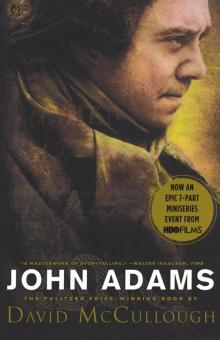 John Adams
John Adams The Greater Journey: Americans in Paris
The Greater Journey: Americans in Paris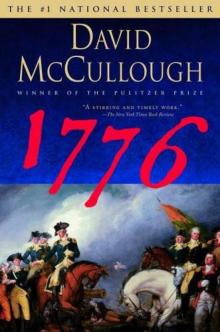 1776
1776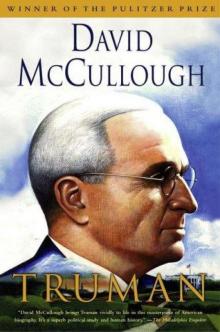 Truman
Truman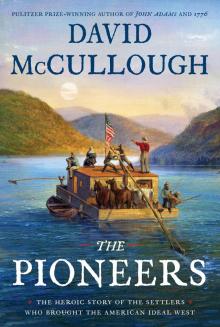 The Pioneers
The Pioneers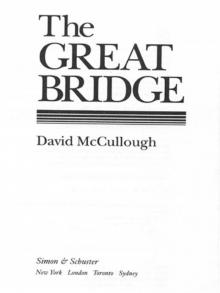 The Great Bridge: The Epic Story of the Building of the Brooklyn Bridge
The Great Bridge: The Epic Story of the Building of the Brooklyn Bridge The American Spirit
The American Spirit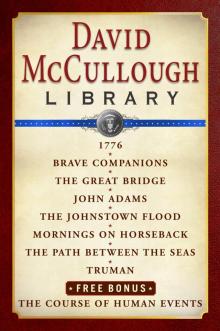 David McCullough Library E-book Box Set
David McCullough Library E-book Box Set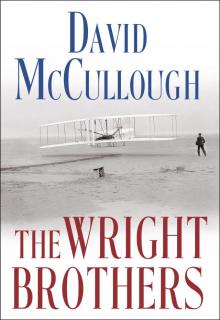 The Wright Brothers
The Wright Brothers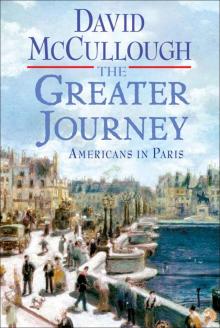 The Greater Journey
The Greater Journey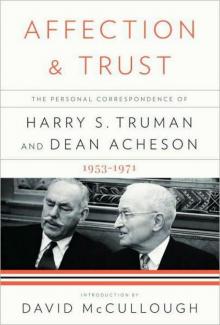 Affection and Trust: The Personal Correspondence of Harry S. Truman and Dean Acheson, 1953-1971
Affection and Trust: The Personal Correspondence of Harry S. Truman and Dean Acheson, 1953-1971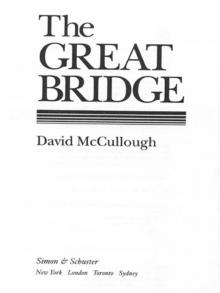 The Great Bridge
The Great Bridge